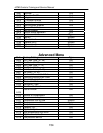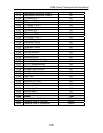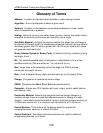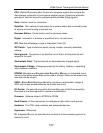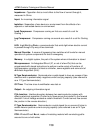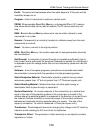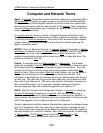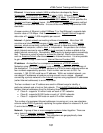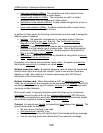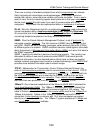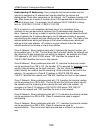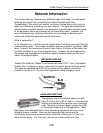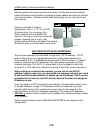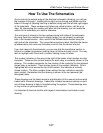
iCOM
Control Training and Service Manual
There are a variety of standard protocols from which programmers can choose.
Each has particular advantages and disadvantages; for example, some are
simpler than others, some are more reliable, and some are faster. From a
user's
point of view, the only interesting aspect about protocols is that your
computer or
device must support the right ones if you want to communicate with other
computers. The protocol can be implemented either in
hardware or in software.
RJ-45: Short for Registered Jack-45, an eight-wire
connector used commonly to
connect computers onto a
local-area networks (LAN), especially Ethernets. RJ-
45 connectors look similar to the ubiquitous
RJ-11 connectors used for
connecting telephone equipment, but they are somewhat wider.
SNMP: Short for Simple Network Management Protocol, a set of
protocols for
managing complex
networks. The first versions of SNMP were developed in the
early 80s. SNMP works by sending messages, called protocol data units (PDUs),
to different parts of a network. SNMP-compliant devices, called agents, store data
about themselves in
Management Information Bases (MIBs) and return this data to
the SNMP requesters.
SNMP 1 reports only whether a device is functioning properly.
The industry has
attempted to define a new set of protocols called SNMP 2 that would provide
additional information, but the standardization efforts have not been successful.
Instead, network managers have turned to a related technology called
RMON that
provides more detailed information about network usage.
TCP/IP: Abbreviation for Transmission Control Protocol/Internet Protocol, the
suite of
communications protocols used to connect hosts on the Internet. TCP/IP
uses several
protocols, the two main ones being TCP and IP. TCP/IP is built into
the
UNIX operating system and is used by the Internet, making it the de facto
standard for transmitting data over networks. Even network operating systems
that have their own protocols, such as
NetWare, also support TCP/IP.
10BaseT: One of several adaptations of the
Ethernet (IEEE 802.3) standard for
Local Area Networks (LANs). The 10Base-T standard (also called Twisted Pair
Ethernet) uses a
twisted-pair cable with maximum lengths of 100 meters. The
cable is thinner and more flexible than the
coaxial cable used for the 10Base-2 or
10Base-5 standards. Cables in the 10Base-T system connect with RJ-45
connectors. A
star topology is common with 12 or more computers connected
directly to a
hub or concentrator. The 10Base-T system operates at 10 Mbps and
uses
baseband transmission methods.
163



